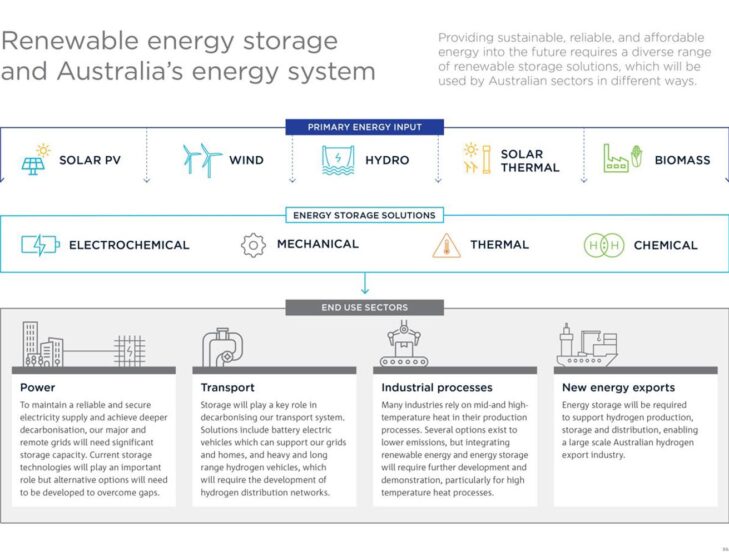
CSIRO roadmap shows major role of storage in energy transition
Storage of renewable energy will be essential to Australia’s net zero transition but will require significant investment, according to the latest roadmap released last week by Australia’s national science agency, CSIRO.
The Renewable Energy Storage Roadmap shows that storage capacity must grow significantly over the coming decades to keep pace with rapidly rising electricity demand, which is projected to increase as building and transport industries electrify.
The report indicates that Australia’s national electricity market (NEM) could require a 10- to 14-fold increase in its electricity storage capacity between 2025-2050.
It also found that while traditional storage technologies, such as batteries and pumped hydro, will continue to play a key role, all forms of energy storage must be considered to meet Australia’s growing demand across multiple sectors.
In response to common challenges around decarbonisation and technology readiness, the roadmap examines the role of storage for seven sectors, highlights specific challenges and technology options, and finds that individual sectors favour different storage technologies.
CSIRO Chief Executive Larry Marshall noted new technologies would be needed to increase penetration of renewables and stabilise the grid as Australia starts to build utility scale storage capacity.
“Over the long-term storage will accelerate the integration of renewables, enhancing grid stability and reliability, and supporting decarbonisation of industries,” Marshall said.
“There is no silver bullet for reaching net zero so we need multiple shots on goal, like from renewables, batteries, hydrogen, thermal storage, pumped hydro, sustainable aviation fuels and a host of new science-driven technologies.
“Reaching net zero is a wicked challenge, we need a robust pipeline of projects that use diverse technologies supported by industry, government, research and community stakeholders to ensure that no industry and no Australian is left behind,” he said.
CSIRO Energy Director Dietmar Tourbier said the roadmap is a major step towards pinpointing fit-for-purpose solutions for energy storage.
“For example, batteries may be the best option for local and short duration storage of electricity while thermal or heat energy (like steam) might be technology better suited for heat intensive industries,” Tourbier said.
“Government and industry have recognised energy storage as a priority. However, significant knowledge gaps remain, requiring further investigation to support informed action.
“Co-investment is required across the system to accelerate technology commercialisation and scale up across a diverse portfolio of energy storage technologies,” he said.
The roadmap builds on prior publications and scenarios to estimate storage demand across multiple use cases and Australian jurisdictions. It also extends the discussion to new technology areas (for example hydrogen and thermal energy storage), pointing out sector-specific requirements, technology summaries and recommendations for scale-up.
To inform the role of energy storage, report authors brought together government and industry stakeholders, alongside CSIRO modelling and analysis.
The report is a valuable distillation of the challenges with energy storage and is released ahead of the launch of our Renewable Energy Powerhouse Mission and the Revolutionary Energy Storage Systems Future Science Platform. It is an important catalyst for discussions and actions in pursuing a robust, sustainable renewable energy economy, built on Australia’s critical minerals endowment.








.jpg)
